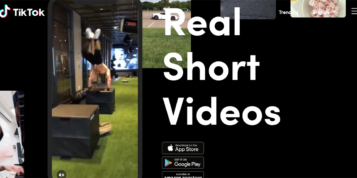Social media is rapidly evolving and with the recent announcement that Twitter has been enhanced to ensure it is “optimsed for speed”, it is vital for organisations to actively engage and manage their social media presence. Millions of customers now have instant access to their social media accounts at their fingertips, making it easier than ever for them to vent their frustration about an organisation’s bad service.
It is understandable that every organisation will at some point experience a broken process, technical glitch or unfortunate moment due to human error. The challenge is to ensure potential risks or mistakes are identified early enough to avoid them becoming a customer service issue.
In the past, companies had a significant window of opportunity to analyse and address potential faults before they became a threat to brand reputation. Today’s new social customers, however, are quick and often unforgiving. The collective voice of unsatisfied consumers can strike back with lightning speed and sometimes with detrimental results. The key to staying ahead of the game is to have a handle on how to identify your next customer tipping point and then, more importantly, knowing when and in what ways to respond.
Staying Proactive When Things Go Awry
Some potential pitfalls as businesses grow can be avoided if you heed the lessons others have picked up along the way. The following summarises several customer service blunders, each of which resulted in a backlash of negative customer feedback and media coverage.
Sudden Price Increase Upsets Customers
After announcing a significant price increase, many loyal customers cancelled their service and responded to the change via social media. The Internet subscription service apologised, but the request for forgiveness was drowned out further by a decision to tier its offerings. As a result, this brand felt the impact of losing dedicated customers. These decisions could have potentially been handled more carefully by incorporating insights from a panel of existing customers to flush out the various options and how to communicate the rationale behind them in a clear manner before the changes were launched to the broad scale market.
Drastic Logo Change Tests Customer Loyalty
A leading retailer announced its new branding and then abruptly withdrew the decision only a few days later. In what amounts to a corporate mea culpa, the company posted a message to its Facebook account saying, “OK¾we heard loud and clear that you don’t like the new logo.” The company reintroduced the original branding, and in doing so, deserves credit for moving swiftly to respond to customer reaction. This could lead you to wonder how many customers it ran the new logo by before the launch. No doubt, some focus groups were conducted, but this particular example proves that a much larger, unbiased sample across different segments could have made a difference.
New Product Causes Service Issues
After releasing a new mobile phone, customers experienced constant dropped calls. This technology innovator, however, didn’t respond to the numerous requests and red flags it received for an entire week, because its research showed that only half of one percent of users actually encountered the problem. The voices posted on the social networks proved otherwise, so the company offered a free accessory to millions of buyers. Identifying the situation earlier could have saved all kinds of headaches on both sides.
Letting Customers Be Your Guide
It’s important to realise that customers who are already loyal to your products and services tend to be forgiving¾to a degree. That said, you can’t take them for granted. That’s where a Voice of the Customer (VoC) strategy can come into play—helping identify key customer issues early and arming an organisation with the intelligence they need, saving time, resources and brand image.
Today’s forward-thinking organisations are starting to take a more proactive approach through a centralised means of detecting, gathering, analysing and acting on insights from their VoC programmes. And in doing so, they are reaping such benefits as:
- Monitoring and detecting unforeseen trends: It can be hard to anticipate what may prompt customer frustration. That’s because it’s not always based on a move you make, and could be something your competitor or government initiated. Usually, the first voices come from unstructured sources, such as phone calls into the contact centre, emails or postings on social networks. Some speech analytics and text analytics technologies can monitor a near unlimited set of words and phrases across these channels and provide critical “early warning” signals when a new issue is becoming more prevalent. The unstructured sources can also provide a “virtual focus group” of thousands or millions of consumers, helping determine important concerns worthy of exploring.
- Managing consumer panels: Offer some of your most loyal customers an opportunity to participate in panels or feedback discussions. This can be a great platform for testing corporate changes before rolling out to a wider customer base and experiencing a backlash that could have been avoided.
- Seeking ongoing and “actionable” feedback: Companies need to get smarter about how they survey customers. It is important to start by assessing all the existing information you have about customers, so you don’t end up asking what you already know.
- Taking action: Arguably the most important aspect of a VoC programme is being proactive around customer insights and requests, and communicating your actions back to the consumer. This not only helps build loyalty and gives customers a reason to provide feedback in the future, but also lets them know you’re listening and that you care. Successful VoC programmes are enterprise-wide and typically run by senior executives that can integrate different departments that interface and impact consumers.
Armed with real and recent customer interaction insights – which include likes and dislikes, requests and questions – organisations can make more informed decisions and craft the right responses to defuse, or even ride, the social wave. Some of these issues may even turn into lucrative opportunities for customers and the business alike. In this way, marketing, product development and other customer-impacting groups in the enterprise can be more proactive, more informed and better positioned to anticipate what’s coming and put their best foot forward.






